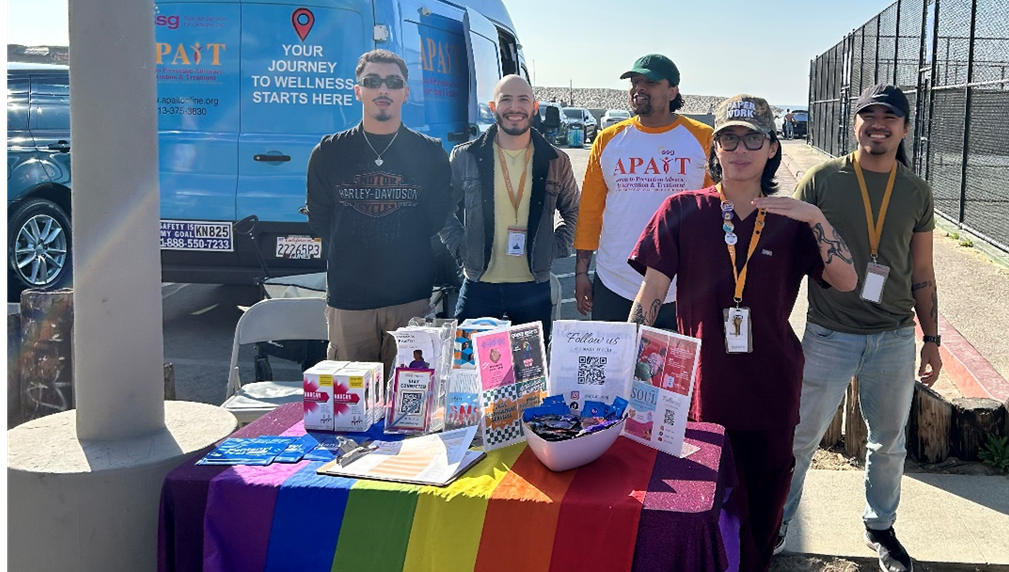The MacArthur Park Housing, Outreach, and Multiservice Engagement (The MAP HOME) Project
The MAP HOME (The MacArthur Park – Housing, Outreach, Multiservice Engagement) is a street-based outreach initiative providing harm reduction, housing navigation, and wraparound health services to unhoused individuals in and around MacArthur Park. By centering trauma-informed care and low-barrier access, the project addresses urgent health and housing needs while working to restore safety and shared access to one of LA’s most impacted public spaces.

What is the primary issue area that your application will impact?
Affordable housing and homelessness
In which areas of Los Angeles will you be directly working?
Central LA
In what stage of innovation is this project, program, or initiative?
Expand existing project, program, or initiative (expanding and continuing ongoing, successful work)
What is your understanding of the issue that you are seeking to address?
MacArthur Park has the highest concentration of overdose deaths among people experiencing homelessness in LA County (LACDPH, 2025). The area illustrates a crisis of combined epidemic[DH1] [AM2] s—homelessness, substance use, and unmet behavioral health needs intersect in ways that have overwhelmed traditional housing and healthcare systems. Reporting from the USC Center for Health Journalism highlights how public overdoses, drug-related theft, and visible death have impacted the Westlake neighborhood, deterring community members from accessing one of LA’s largest green spaces. These conditions reflect not just a public health emergency but a lack of capacity for existing systems to meet the needs of marginalized populations in the area. Our program seeks to address these gaps through low-barrier, trauma-informed, harm reduction–oriented outreach focused on supporting individuals access services and navigate housing opportunities with one-on-one support.
Describe the project, program, or initiative this grant will support to address the issue.
SSG/APAIT will expand its trauma-informed, street-based outreach in and around MacArthur Park to support unhoused individuals—especially people who use drugs—through integrated services that reduce harm, promote health, and increase access to housing. Building on our Midnight Stroll model, the program will deploy consistent outreach teams trained in trauma-informed care, harm reduction, and de-escalation. Outreach will occur twice monthly (24 shifts total), offering low-barrier engagement and distributing essential supplies including Narcan, hygiene kits, and safer use materials.
Housing navigation will be core to the work. We will support 150 individuals with screenings and referrals, assist minimally 75 individuals with obtaining vital documents, and help at least 30 individuals secure interim or permanent housing placements. Outreach will also include HIV/STI testing (150 tests), behavioral health needs assessments (120), and follow-up care navigation (120 individuals) across medical, behavioral, and HIV services. We will provide health education to 500 individuals and distribute 2,500 harm reduction and wellness supplies.
Monthly team debriefs and standardized safety logs will be used to monitor safety conditions, guide staff support, and inform outreach adaptations throughout the project period.
Describe how Los Angeles County will be different if your work is successful.
This project will improve housing stability, healthcare access, and survival for unhoused individuals—particularly people who use drugs—living in and around MacArthur Park. At the client level, hundreds will receive harm reduction supplies, health education, and individualized support navigating housing and care systems. Community members will benefit from increased safety and access to shared public space. At a systems level, this initiative will demonstrate how trauma-informed, street-based outreach can address the challenges of co-existing epidemics without criminalization. Long-term, we aim to scale this model to other high-need areas and inform citywide approaches to housing, healthcare, and encampment response.
Approximately how many people will be impacted by this project, program, or initiative?
Direct Impact: 500
Indirect Impact: 5,000